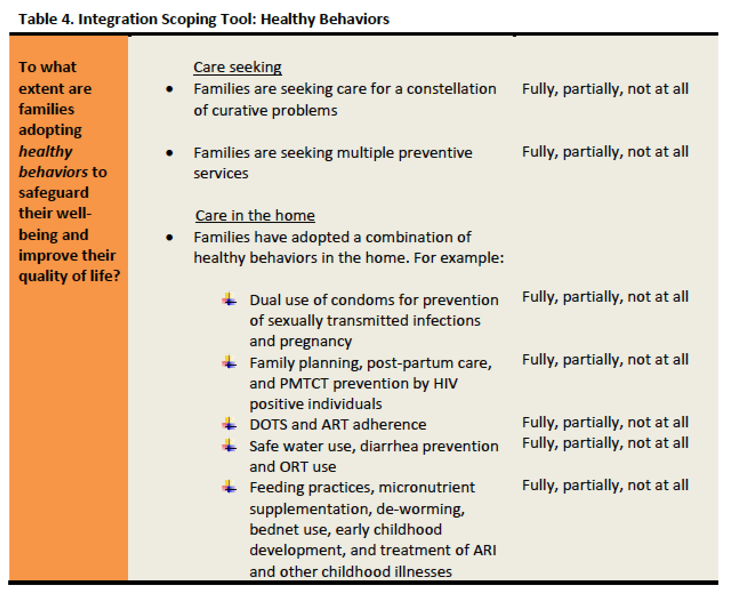Monitor Program
Process Evaluation
Program monitoring and process evaluations share some overlap. Monitoring, however, is typically a continuous process meant to document inputs, outputs and outcomes over time and confirm that implementation plans are proceeding as intended. Sometimes, these data are used to make mid-course corrections if benchmarks established by the program strategy are not being met. Process evaluation goes beyond monitoring to analyze why certain elements of the programs are meeting expectations and others are not. Like everything else, process evaluation poses unique challenges and requirements when applied to integrated programs.
Process evaluation can help answer questions such as:
- What level of integration is occurring across sectors?
- What is the quality of the program components that contribute to integration?
- How can data on the implementation experience explain how any observed amplified or synergistic effects were achieved? If none was achieved, how can we use the data to explain why they were not?
- What strategies are facilitating (or inhibiting) the cross-sector coordination or collaboration required by the program?
- How did the implementation process change in the transition from a vertical to an integrated approach?
- Are the target beneficiary population(s) being reached, with which activities, and how does the integration strategy explain that?
- Are households or individuals accessing more than one part of the intervention (and if so, how many and why)?
(Source: FHI360 Guidelines)
Include the experiences of a wide range of individuals operating at various levels in your process evaluation to assess how the program is perceived, establish what is working as expected, and identify any problems or possible barriers. Solicit feedback from program beneficiaries, non-beneficiaries, service providers, local leaders, program staff, partner organizations, Ministries, donors, and other stakeholders in the process evaluation to gain a broad perspective. A mixed methods approach including document review, secondary data analysis, quantitative surveys, qualitative techniques, and/or systems approaches can help give a richer understanding of associations and context.
Resources
The Global Health Initiative developed an Integration Scoping Tool that can be used to better understand the nature and extent of integration efforts. The tool examines five functional domains, each of which is broken down into several integration elements and assesses to what extent the integration has taken place: policy, programs, system support strategies, services, and health behaviors. It helps answer the following questions: 1) To what extent is a supportive policy environment in place to foster integration? 2) To what extent are programs being consolidated to achieve better outcomes at lower cost? 3) To what extent are health system support strategies being managed to support integrated service delivery and health promoting behavior in the home? 4) To what extent have facility-based, community-based, and other services been integrated to expand access, improve quality, lower costs and respond to client needs? 5) To what extent are families adopting healthy behaviors to safeguard their well-being and improve their quality of life? The tool for health behaviors is included below.


